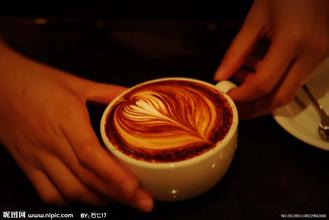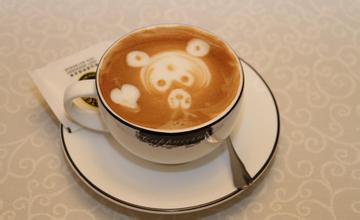Ecuadorian Coffee Grind Variety Characteristics Producing Area Flavor Description Taste Manor Introduction
Port Guayaquil is the largest seaport in Ecuador. It faces the Pacific Ocean and backs against Mount Santa Ana. The nearby island of Pune serves as a natural barrier to protect the harbour from storms. There is a wharf in the south, which is more than 900 meters long. Ships from different parts of the world flying various flags are moored in the harbor. The port railway leads to the capital Quito, and highways connect Quito with other cities in the country. Bananas, cocoa, coffee, cotton and other products from all over the country are collected and distributed here. Guayaquil has also played an important role in the history of friendly exchanges between the peoples of China and Ecuador. As early as the 18th century, Chinese clothing, textiles and other goods were shipped to Ecuadorian cities through Guayaquil. In August 1978, the Chinese cargo ship Jialing River arrived here for the first time. Most of the import and export goods of the two countries are transshipped through Guayaquil, the Ecuadorian flag is rectangular, with an aspect ratio of 2:1. The flag is made up of three rectangles connected by yellow, blue and red. Yellow occupies 1 quarter of the flag, while red and blue each account for 4. The national emblem is painted in the central government. Yellow symbolizes national wealth, sunshine and food; blue symbolizes blue sky, sea and magnificent Amazon; red symbolizes the blood of patriots fighting for freedom and justice.
The enthusiasm for introducing Ecuadorian boutique coffee to Chinese consumers led the Ecuadorian Export and Investment Promotion Agency (Pro Ecuador) and the welcoming Research Institute (InkaLab Coffee) to jointly organize this cultural experience event of Ecuadorian boutique coffee. The purpose of this event is to raise Chinese consumers' awareness of Ecuadorian coffee and related food culture, so as to play a positive role in promoting the future sales of Ecuadorian coffee in the Chinese market.
Mr. Diego Vega, Chief Commercial Officer of Ecuador's Export and Investment Promotion Agency, and CEO Erika Wang of Yingcai Institute attended the event and introduced Ecuador's diverse coffee producing areas, such as Loja, Imbabura, Zamora, Vilcabamba and Galapagos.
Ecuador's unique ecosystem makes coffee from different coffee producing areas have a unique taste. That's why every mouthful of coffee made from Ecuadorian beans, whether it's a single coffee or a blend, is endless and tasteless.
Spend an inspirational afternoon with star barista and Michelin chef!
In order to show the public the superior quality of Ecuadorian coffee and its diversity as raw materials for other drinks and delicacies, the following celebrity guests were specially invited to attend the event to show rich and diverse cultural colors.
Luciana Liao--Inkalab baristas and Shanghai finalists of the World barista Competition will demonstrate the first-class quality and different tastes of Ecuadorian coffee through a coffee hand show. After the hand display, guests can taste the special coffee from different producing areas of Ecuador.
Miguel Monar, a famous Ecuadorian chef with more than 20 years of international experience in the catering industry, is committed to developing novel recipes that combine ingredients with Ecuadorian coffee-"spicy mango coffee cocktail" is a creative drink that stimulates taste buds and gives you a different taste experience.

Important Notice :
前街咖啡 FrontStreet Coffee has moved to new addredd:
FrontStreet Coffee Address: 315,Donghua East Road,GuangZhou
Tel:020 38364473
- Prev

Uganda Coffee Flavor description characteristics of Grinding degree introduction to the taste of fine coffee beans in producing areas
This coffee is produced in the Mount Elgonne region of Uganda. Balanced acidity and rich oil between 1600 and 1900 meters above sea level are the characteristics of this coffee. It tastes mild and simple, with a papaya flavor. Dry aroma (1-5): 3.2 wet aroma (1-5): 3.4 acidity (brightness) (1-10): 8 taste (hierarchy) (1-10): 8.5 taste (alcohol thickness)
- Next

Description of Grinding degree and Flavor of Panamanian Cupid Coffee introduction to Fine Coffee
Central America is a long isthmus from northern Mexico to southern Colombia, connecting North and South America. Panama is located in the southernmost part of Central America, so the country runs from east to west, not from north to south as people think. This means that the coast of the Caribbean (Atlantic) is in its north, while the Pacific is in the south. So far, Panama also shares the Atlantic Ocean.
Related
- Detailed explanation of Jadeite planting Land in Panamanian Jadeite Manor introduction to the grading system of Jadeite competitive bidding, Red bid, Green bid and Rose Summer
- Story of Coffee planting in Brenka region of Costa Rica Stonehenge Manor anaerobic heavy honey treatment of flavor mouth
- What's on the barrel of Blue Mountain Coffee beans?
- Can American coffee also pull flowers? How to use hot American style to pull out a good-looking pattern?
- Can you make a cold extract with coffee beans? What is the right proportion for cold-extracted coffee formula?
- Indonesian PWN Gold Mandrine Coffee Origin Features Flavor How to Chong? Mandolin coffee is American.
- A brief introduction to the flavor characteristics of Brazilian yellow bourbon coffee beans
- What is the effect of different water quality on the flavor of cold-extracted coffee? What kind of water is best for brewing coffee?
- Why do you think of Rose Summer whenever you mention Panamanian coffee?
- Introduction to the characteristics of authentic blue mountain coffee bean producing areas? What is the CIB Coffee Authority in Jamaica?

